Are you ready for the easiest of easy stir-fry dinners? This super easy Lo Mein recipe is the perfect no-brainer dinner for when you can’t be bothered to even think about cooking. It’s also a great option for beginners who are still building their skills and confidence in the kitchen. This super simplified Lo Mein recipe is designed to be the best mix of easy, convenient, and satisfying. It has fresh crisp and colorful vegetables, comforting tender noodles, and an easy savory sauce that will remind you of your favorite takeout!
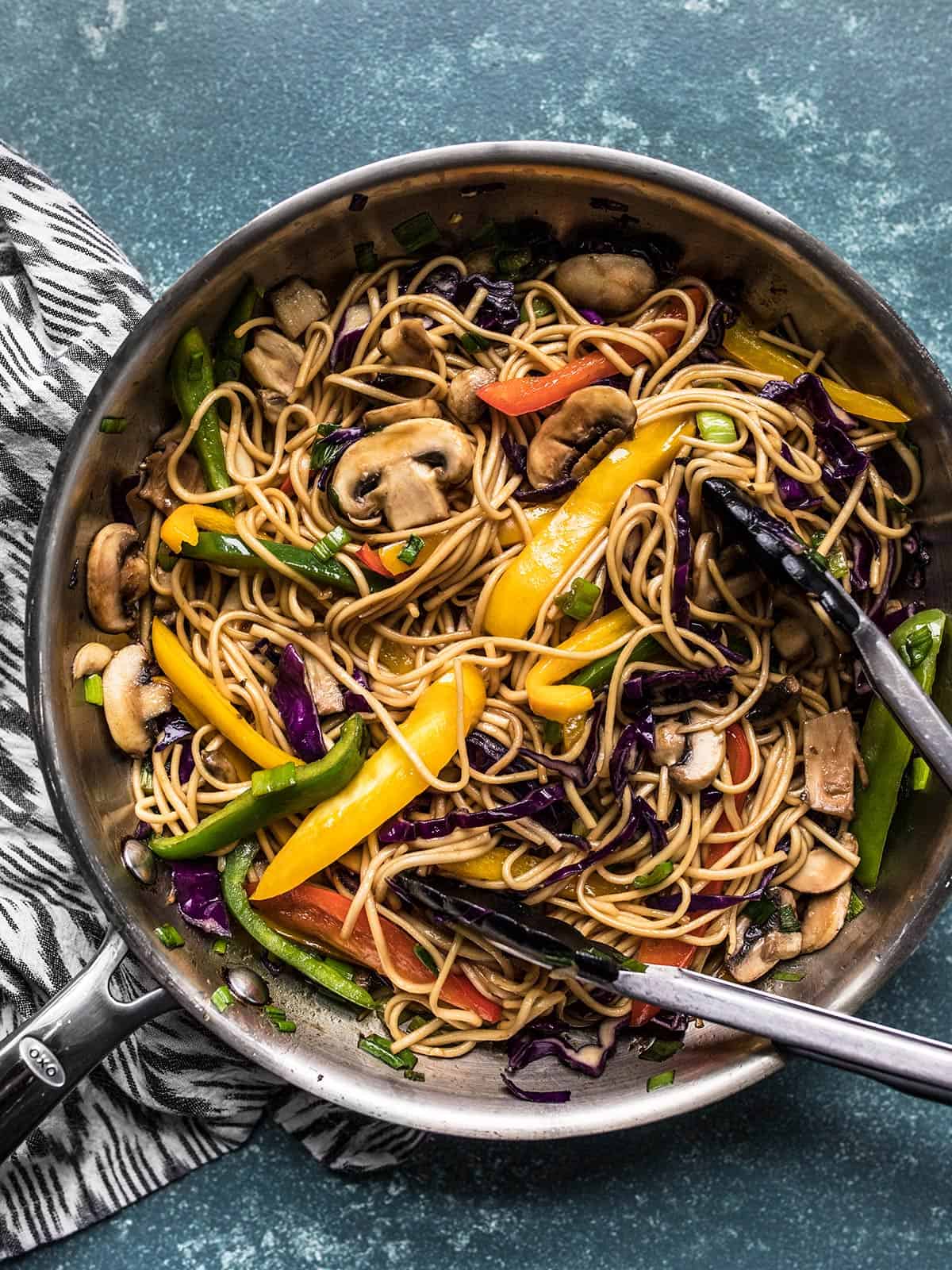
All recipes are rigorously tested in our Nashville Test Kitchen to ensure they are easy, affordable, and delicious.
What Is Lo Mein?
Lo Mein is a Chinese stir fry dish with noodles, the name translating to “stirred noodles” in Cantonese. The stir fry contains tender egg noodles, a light savory sauce, and often vegetables, meat, or seafood. The Lo Mein recipe below is closer to what you’d find in a Chinese American takeout restaurant but simplified even further for easy home prep.
Ingredients for Lo Mein
It doesn’t get any faster or easier than this simple lo mein recipe, which is a great option when you’re trying to use up leftover meat or vegetables in your fridge. Here’s what you’ll need to make your own homemade lo mein:
- Noodles: Traditionally, lo mein is made with long egg noodles, but regular spaghetti noodles may be easier to find, and you may even already have some in your pantry!
- Soy Sauce: Soy sauce is the savory, salty base for the delicious lo mein sauce.
- Sesame Oil: Toasted sesame oil gives the lo mein sauce a rich, nutty flavor.
- Sugar: Sugar helps balance the saltiness of the soy sauce and adds complexity to the dish.
- Cooking Oil: A neutral cooking oil is used to stir fry the vegetables and add that delicious stir-fry mouthfeel.
- Mixed Vegetables: Raid your fridge for whatever leftover vegetables you can find! You can use just about any vegetable in this dish, but avoid high water content vegetables like tomatoes, cucumber, or lettuce (other greens are great). You can also hit up the salad bar at your grocery store to get several colorful vegetables in small quantities!
What else can I add?
I chose an easy mix of mushrooms, bell peppers, cabbage, and green onion for my lo mein, but there are so many other great things you can add! Here are a few more ingredients that will go great in lo mein:
- Vegetables: spinach, snow peas, bean sprouts, shredded carrots, broccoli, cauliflower, or red onion.
- Proteins: cubed tofu, chicken, shrimp, scrambled eggs. (Sauté these in the skillet until cooked before adding the vegetables.)
- Make it Spicy: Add 1 Tbsp sriracha or chili garlic sauce to the lo mein sauce for a spicy kick
- Toppings: chopped peanuts, sesame seeds, fresh green onion
*Note: I strongly suggest including either green onion or red onion in your vegetable mix, since the lo mein sauce does not contain any garlic. Having an aromatic in the mix really helps round out the flavor of the lo mein.
What kind of noodles Are Best for Lo Mein
Traditionally lo mein noodles are wheat and egg pasta, so if you can find that or something close to it, that would be a win. If you can make it to an Asian market you can definitely get some awesome noodles for a very low price.
The most budget-friendly and easily accessible option is to use just regular spaghetti noodles. There’s no shame in that game. I had a little more room in my budget this time around, so I went for some udon noodles that I found in the International aisle (see the package in the step by step photos). I like these noodles because they’re a bit softer than spaghetti and they tend to soak up that salty lo mein sauce a little better, but they did increase the total cost of this dish by a good 30%.
What to Serve with Lo Mein
This noodle stirfry is pretty filling on its own, but if you want to complete your takeout fake-out, try pairing it with some Scrambled Eggs with Rice, Vegetable Fried Rice, Soy Glazed Eggplant, Egg Drop Soup, or Vegetable Egg Rolls.
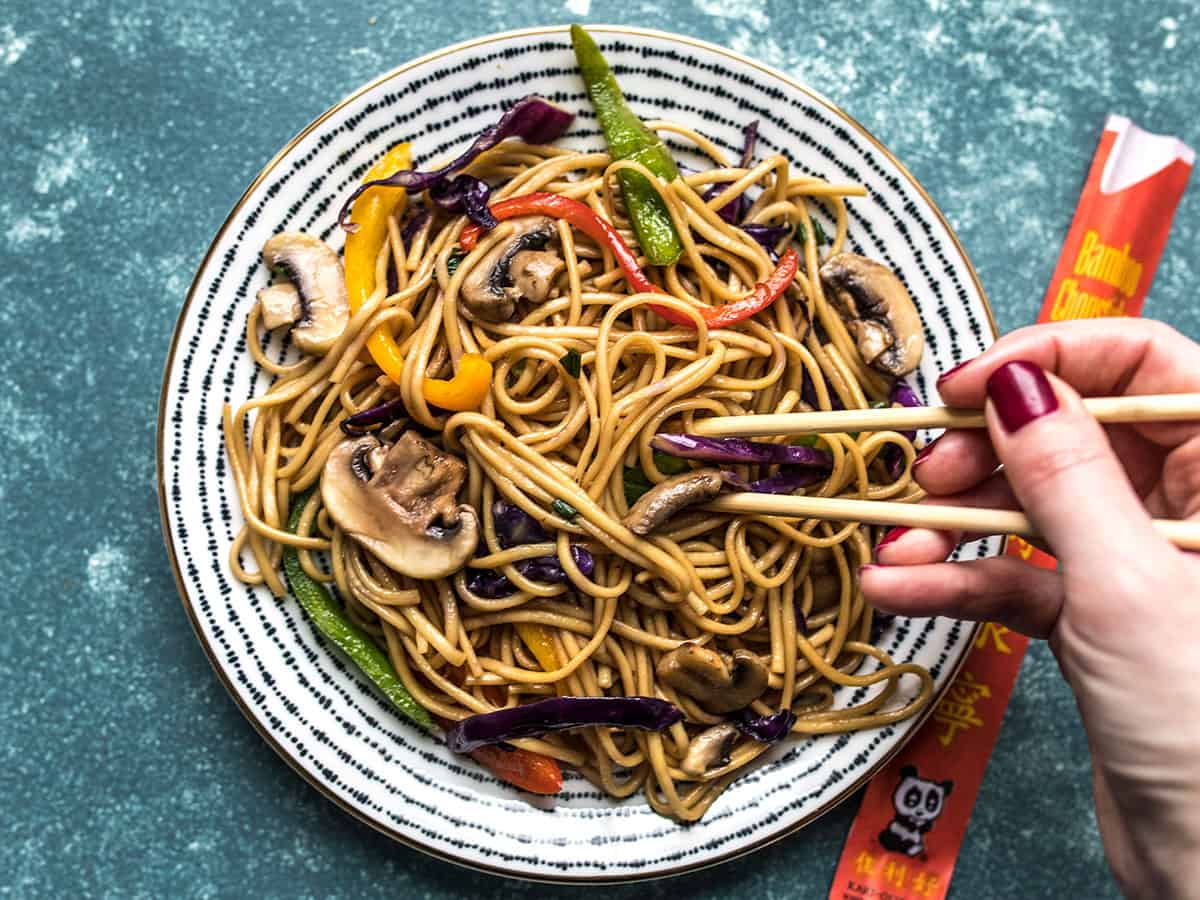
Easy Lo Mein
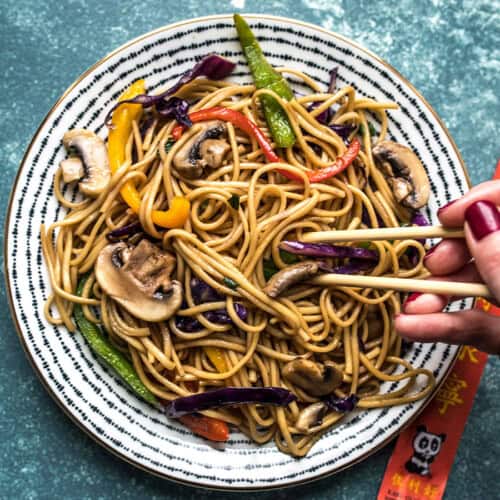
Ingredients
- 6 oz. noodles ($1.86)
- 3 Tbsp soy sauce ($0.18)
- 1 tsp toasted sesame oil ($0.11)
- 1 tsp sugar ($0.02)
- 1 tsp water ($0.00)
- 2 Tbsp high heat cooking oil* ($0.08)
- 3 cups mixed vegetables ($4.08)
Instructions
- Cook the noodles according to the package directions, then drain in colander. While the noodles are cooking, stir together the soy sauce, toasted sesame oil, sugar, and water.
- Heat the cooking oil in a large skillet over medium high heat. Once the oil is very hot and shimmering (it should not be smoking), add the vegetables and stir fry for only about one minute, or just until the edges of the softer vegetables just begin to wilt.
- Add the cooked and drained noodles and the prepared sauce. Continue to stir and cook until the pasta has absorbed most of the sauce and no more liquid pools on the bottom of the skillet (about 2 minutes). The vegetables will soften further during this time. Serve immediately.
See how we calculate recipe costs here.
Notes
Nutrition
Because there’s nothing better than a plate full of noodles!
How to Make Easy Lo Mein – Step by Step Photos
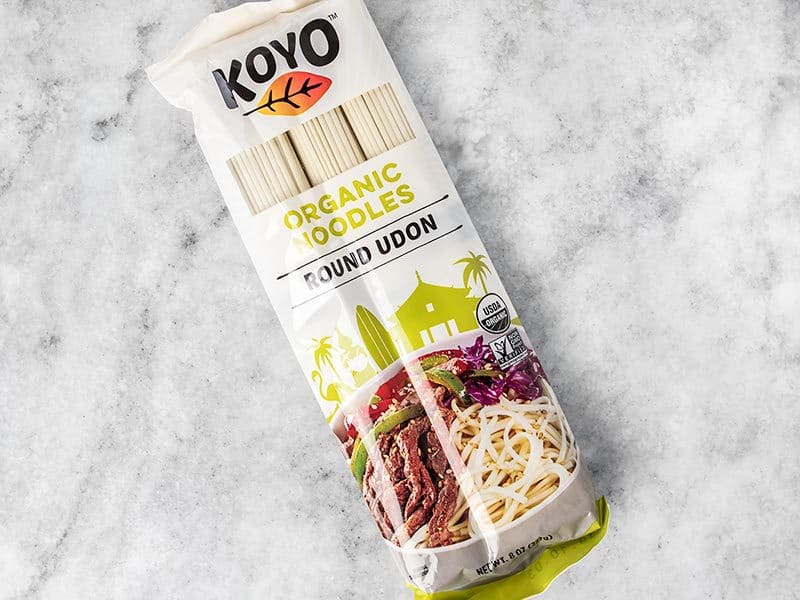
These are the noodles I used, which have an awesome texture and soak up the sauce nicely, but did make this dish quite a bit more expensive than it *needs* to be. Regular spaghetti noodles work just fine when you’re on a stricter budget. If you have an Asian market nearby, you can most definitely get good noodles for a very low cost. Whichever noodles you choose, cook them according to the package directions, and then drain them in a colander.
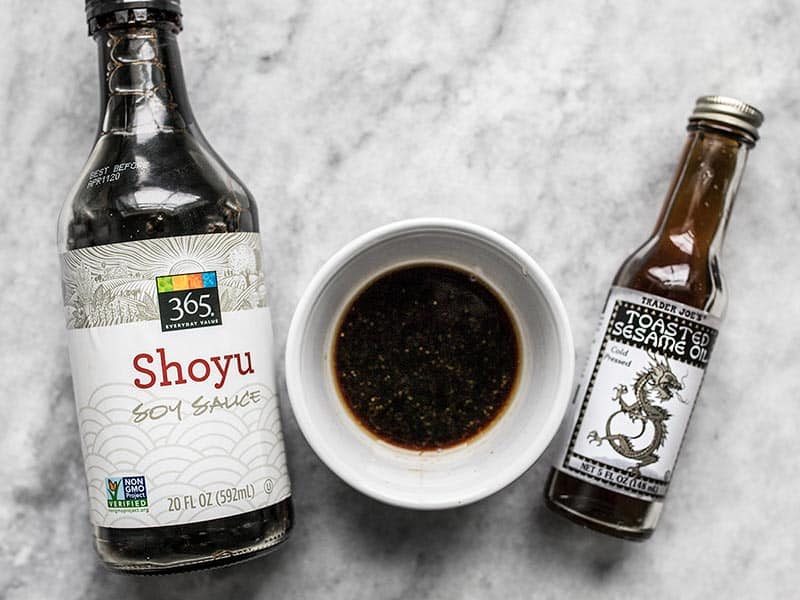
While the noodles are cooking, make the super simplified lo mein sauce. Stir together 3 Tbsp soy sauce, 1 tsp toasted sesame oil, 1 tsp sugar, and 1 tsp water. If you want to make it spicy, you can add 1 Tbsp sriracha or chili garlic sauce. NOTE: make sure to get *toasted* sesame oil, not regular sesame oil. The toasted variety has a much stronger, nuttier flavor. You can tell the difference by the color. Toasted sesame oil is a dark brown color, untoasted is a light straw color. Here is more information on the difference between the two.
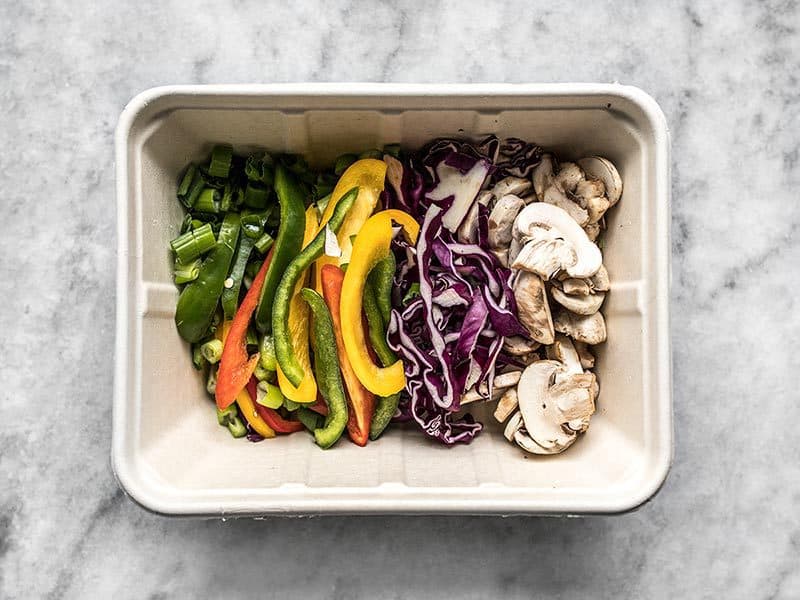
These are the vegetables I grabbed from the salad bar. You’ll need about 3 cups total, whether you’re using up leftovers in your fridge or you hit the salad bar like I did. Make sure to include some sort of onion to help round out the flavor in the stir-fry.
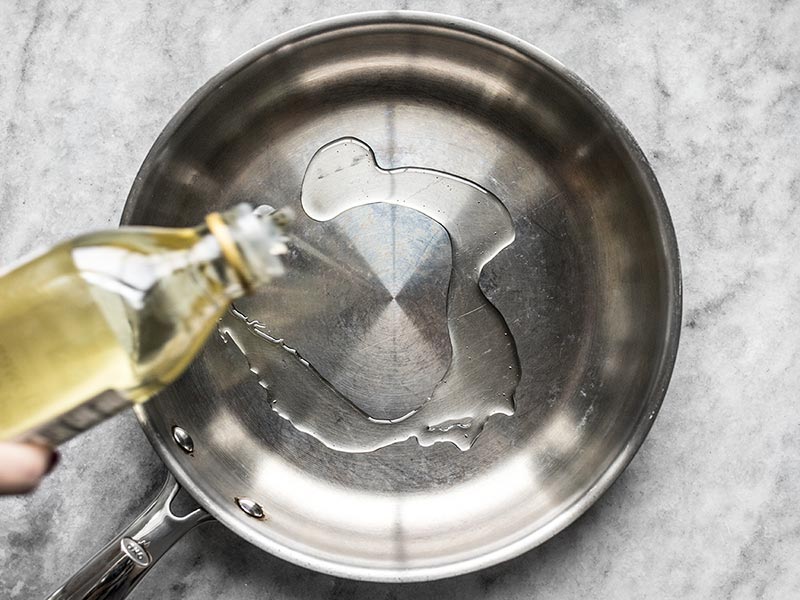
Heat 2 Tbsp high heat cooking oil (of your choice) in a large skillet over medium-high heat. Don’t skimp on the oil here because this really helps give the flavor and mouthfeel that you get from takeout.
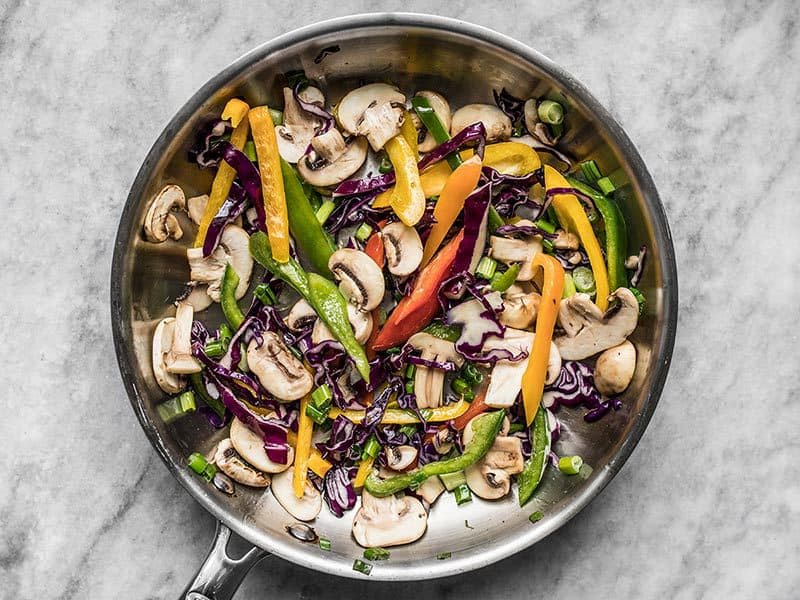
Once the oil is very hot and shimmering, add the vegetables and stir fry them very briefly, like only one minute. Just until the edges of the softer vegetables begin to wilt. The vegetables will cook more after you add the noodles.
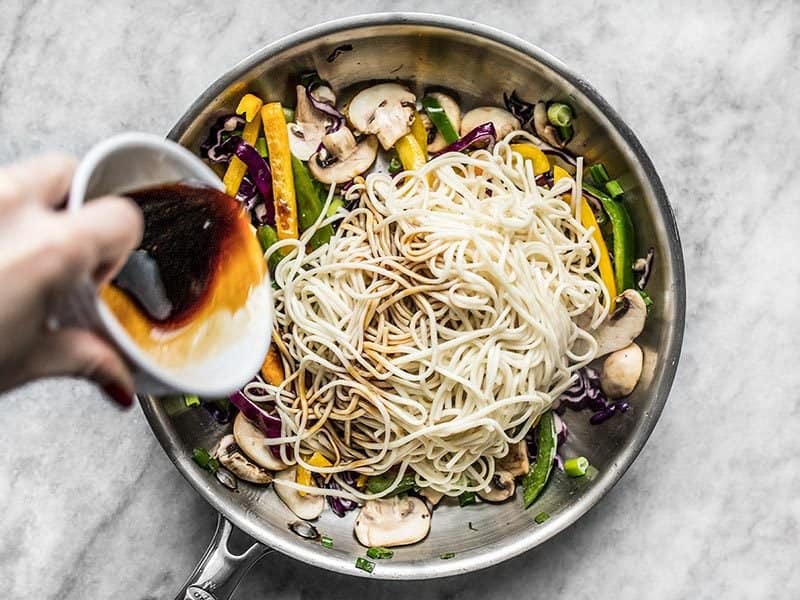
Add the cooked and drained noodles and the prepared lo mein sauce.
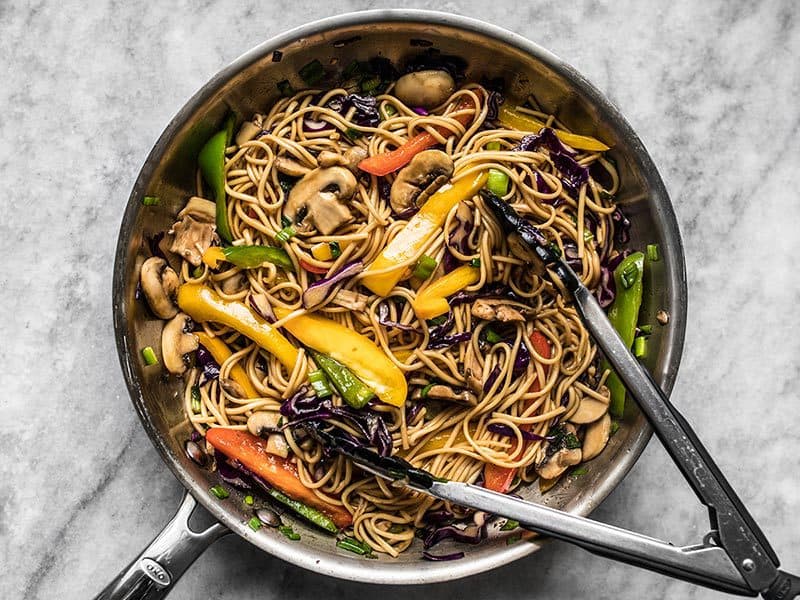
Continue to stir and cook until the noodles absorb the sauce and no more liquid pools on the bottom of the skillet (only about 2 minutes more). And that’s it! Your easy Lo Mein is DONE. Dig in my friend.
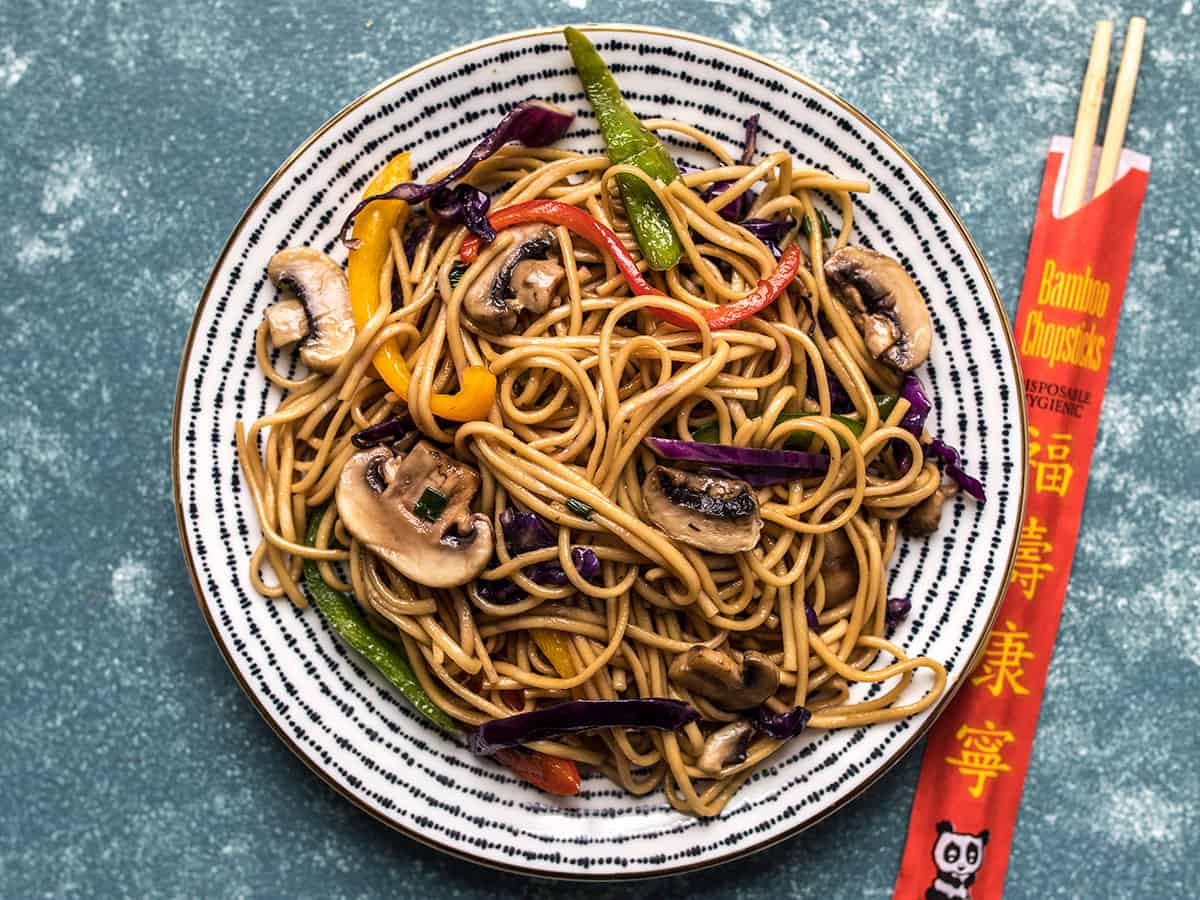


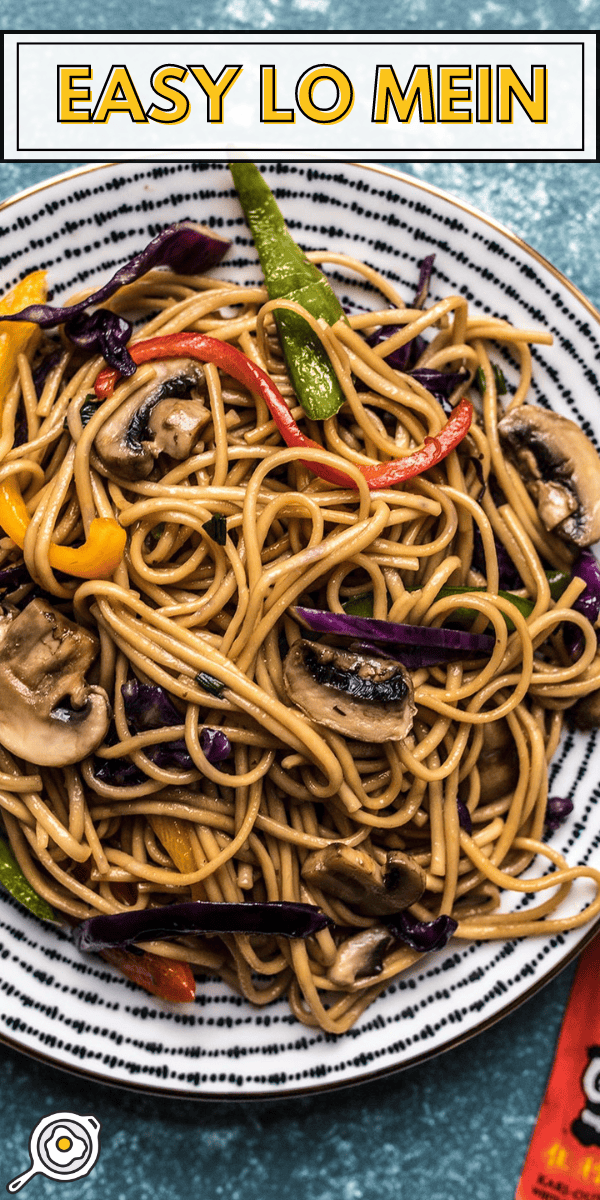
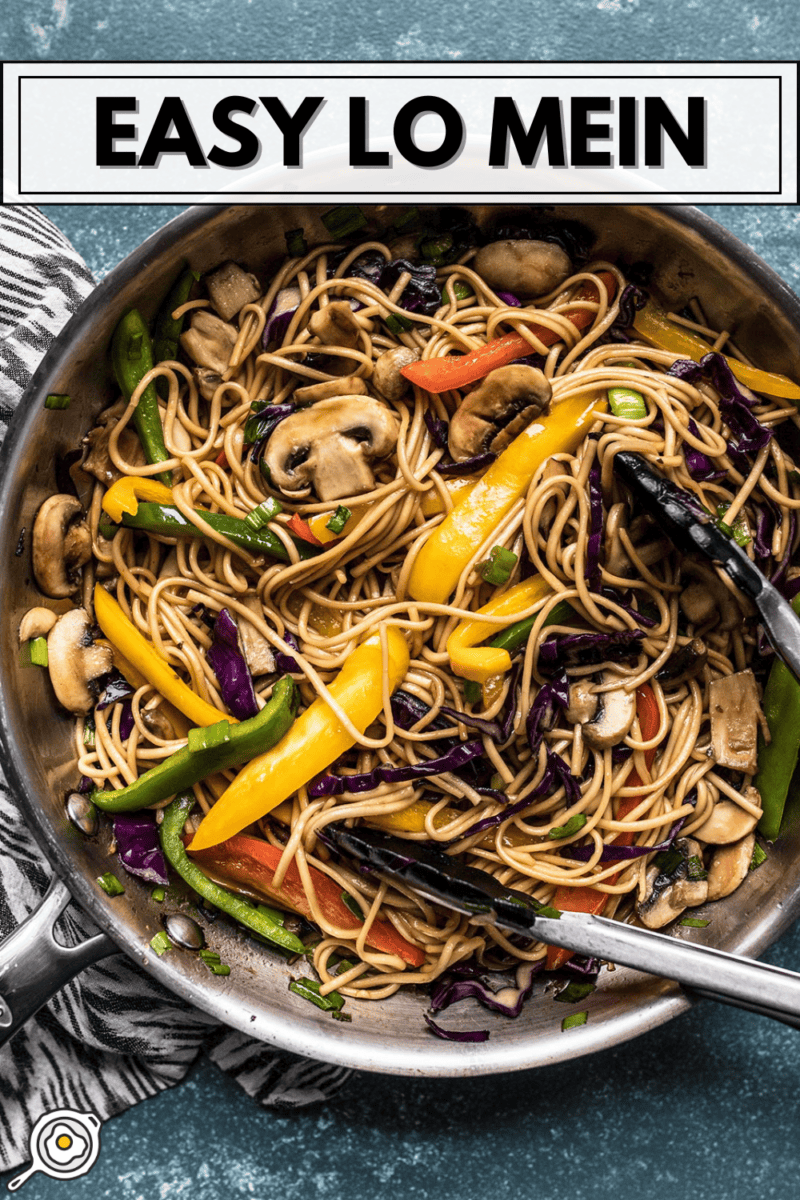

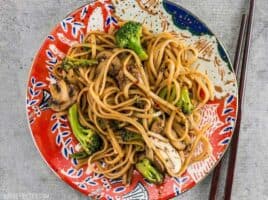

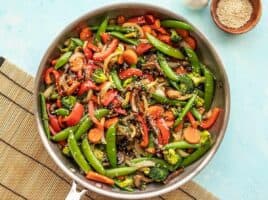
This recipe is easy and delicious. Thanks, Beth and team!
Outstanding!
Loved this recipe. Doubled the sauce, and added a little sriracha as suggested. I had leftover peppers, onion, and carrot to use and it worked great. Also added tempeh and it was perfect.
This recipe does what it’s supposed to do: it’s simple, cheap and gets dinner out quickly. I added chicken breast and I doubled the sauce.
Very tasty way to use up the last of your veggies for the week! I added garlic in at the end before the sauce. I agree that it would be a good idea to double the sauce as well. Also wish I had thought to add some chicken — as is, a serving has less than 10 grams of protein, which I consider a little low. Only other annoyance was that this dish scalded my enameled cast iron despite using canola oil and turning the heat down to medium.
Super easy and quite tasty! I added a smidge of Sriracha into the sauce because we like things spicy, and this was a hit! Adding to the rotation when I need to clean out the fridge of veggies! 😂
My son’s friend stopped by spontaneously after work, and I reluctantly invited him to join us for dinner knowing that he’s a meat-loving guy and I had made this with tofu. Thank goodness I doubled the recipe because he had several helpings and pronounced it “incredibly good.” We all loved it. Definitely a winner!
No idea why everyone is raving about this dish. NO flavor at ALL when cooked as directed.
This was SO good! I added grated ginger and garlic, but I suspect that was gilding the lily. This dish was fantastic and my husband called it a keeper! Going into the rotation!
This was delicious!! I want to eventually stop eating meat altogether, so I’ve been looking for delicious but affordable vegetarian recipes and stumbled onto this site. As someone who loves Chinese food, I had to give this a try and I love it!! Instead of noodles, I used linguine since I had a box that I never got around to using.
Quick, easy and delicious. Thanks Beth!
This was delicious and easy and will become a new staple for sure! :)
This was so easy and delicious! I doubled the sauce, as some others suggested. I browned up some chicken first, removed it from the skillet, and sauteed the veg (used some cabbage, sweet onion, & red bell pepper). I did add a little hoisin, and finished it with some minced cilantro & mint, and squeezed lime over to make it sort of Thai-ish. The hubby had seconds!
What is the best high-heat cooking oil to use for this recipe?
I don’t remember which one I had on hand when I photographed this, but you can use any of the following: avocado oil (refined), almond oil, corn oil, canola oil, grapeseed oil, peanut oil, safflower oil, sesame oil (not toasted), or sunflower oil. :)
I used canola oil. It was great.
Great recipe,! I used low sodium soy sauce and added a bit of hoison sauce and Thai garlic chili sauce…and did use udon noodles. Thank you, Beth!